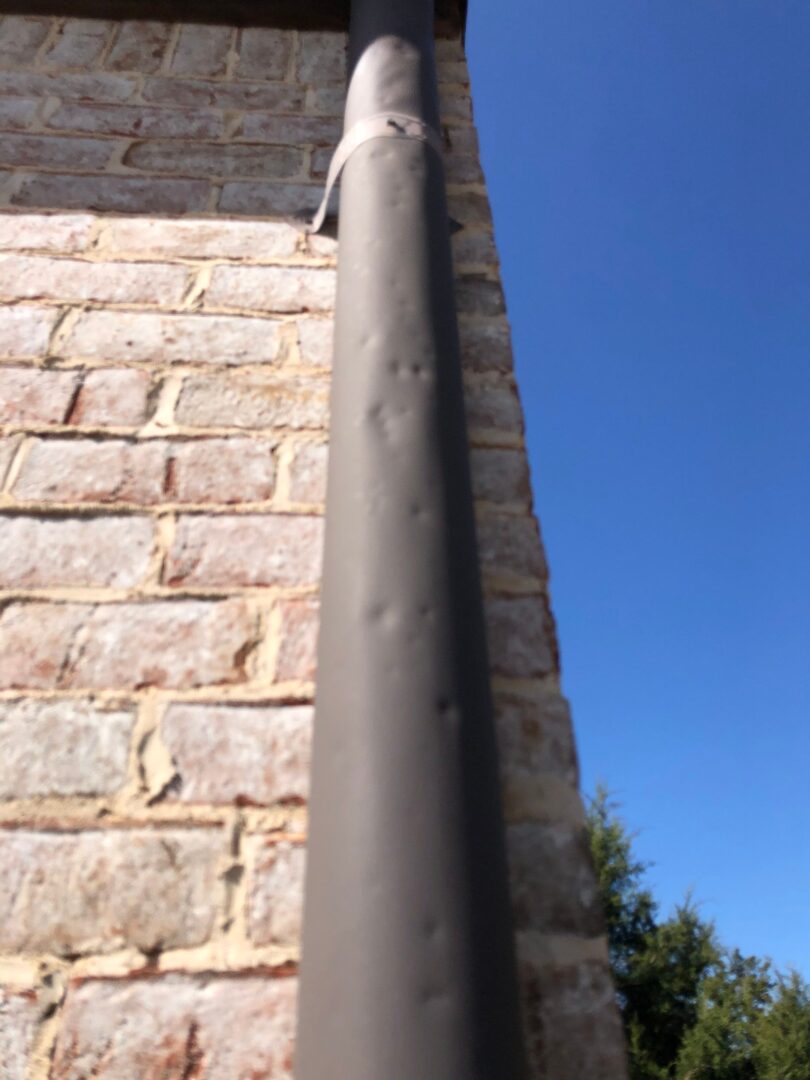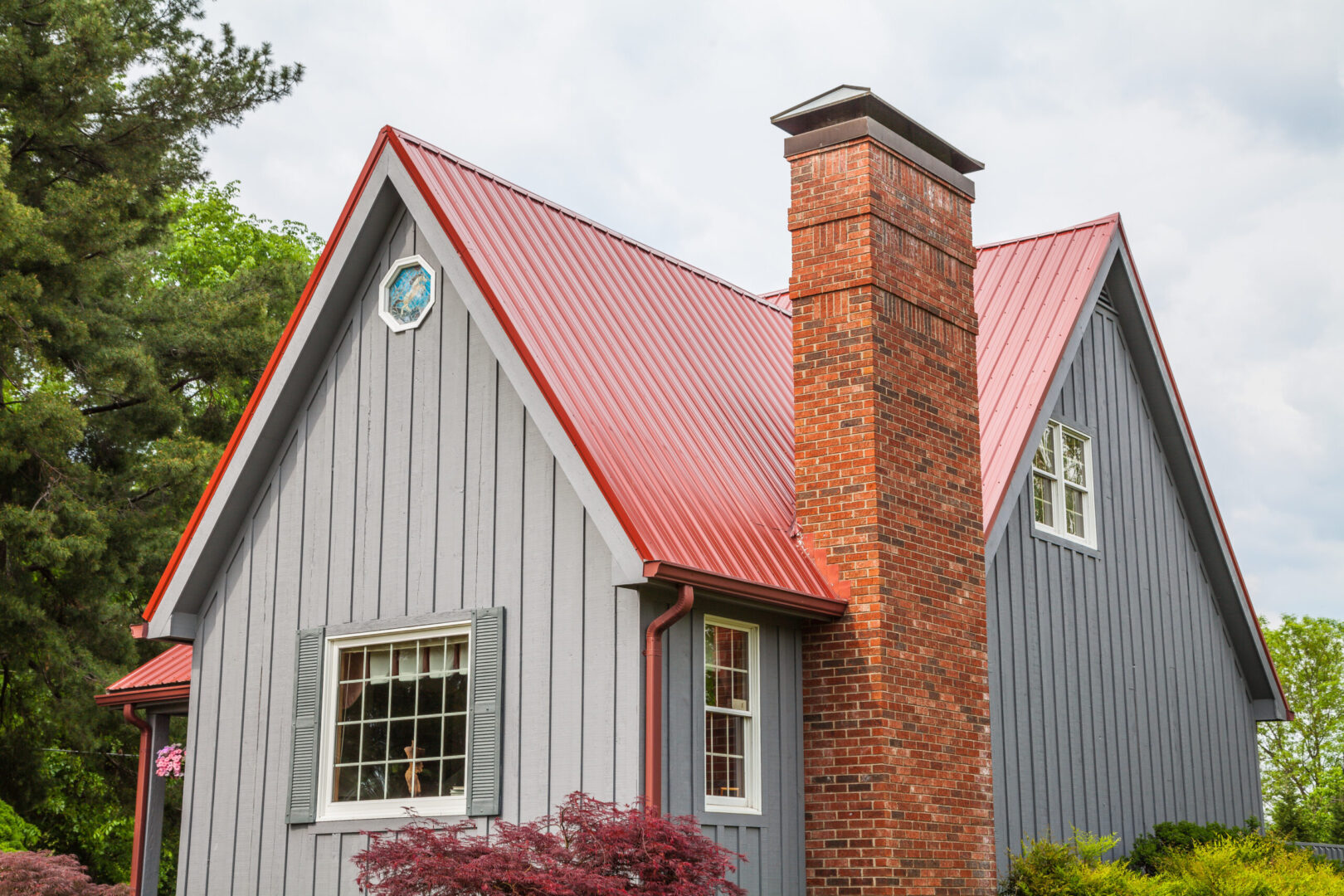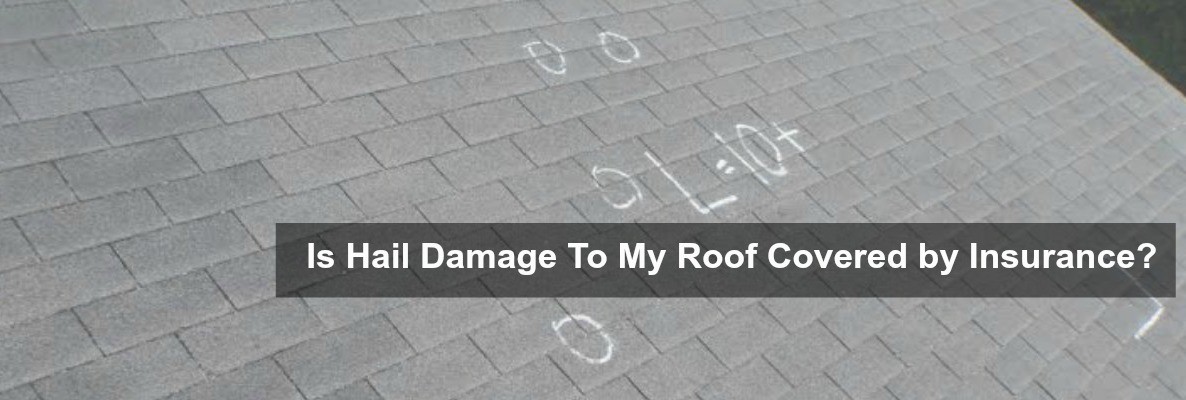Hail Damage Roof Inspection Guide With Pictures
According to NOAA Severe Weather Database, there were 6,962 severe hail storms in the United Stated in 2023. Every year hail storms cause billions of dollars of property damage. Tennessee experienced 96 hail storms that were designated as severe and countless other less severe hail storms that impacted our area.
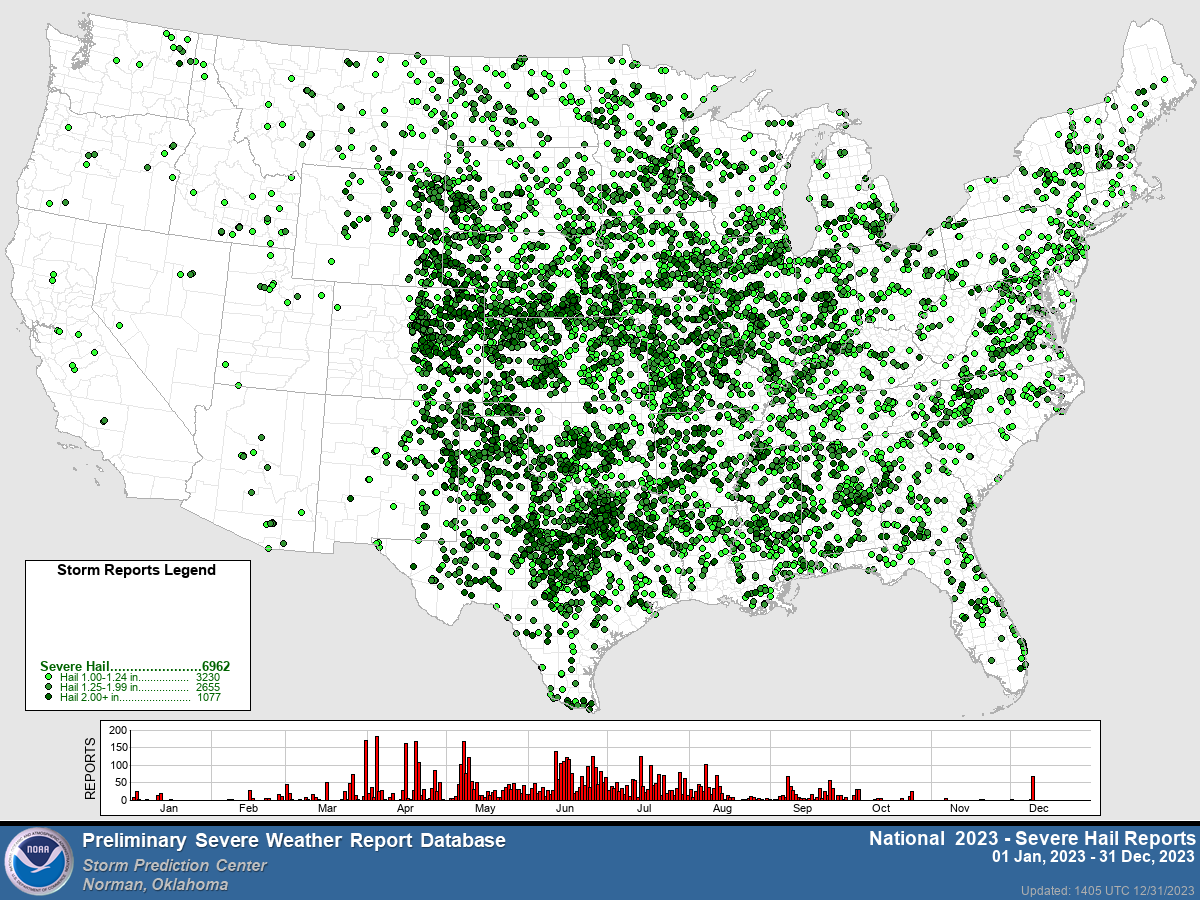
While some of these storms included baseball sized hail, most did not. It is a myth that it takes large hail to cause roof damage. Smaller sized hail can cause significant damage to a roofing system – especially if this hail storm is lengthy. If you live in the Nashville area, you have probably experienced a hail storm that has impacted your home – maybe more than once!
So many homeowners are unaware of hail damage to their roof. It is very common for hail damage to be hard to see to the untrained eye, and is rarely seens from the ground This is why thousands of homeowners each year fail to report hail damage to their insurance carrier.
Hail Damage Questions? We’ve Got Answers!
- What does hail damage look like on asphalt shingles?
- What are signs a homeowner can look for that hail damage has happened?
- What size hail is needed to cause roof damage?
- Can hail damage be repaired?
Safety First – Call a Reputable Roofer!
Roof inspections are dangerous – even for seasoned professional! We strongly advise that you contact a reputable roofer to provide a free roofing inspection on your home. However, it is critical to work with a local company with a solid reputation. MidSouth provides free, honest and accurate roofing inspections and will help determine if you have damage, and if that damage is enough to justify filing an insurance claim.
DIY Roof Inspections
We know that some homeowners will be determined to complete their own roof inspection. The surface of a roof
Make sure you have a ladder that will extend past the top of your gutter line and is in good condition. Never try to climb on a roof with an unstable ladder or one that is too short!
Why Are Hail Storms So Common in Tennessee?
Hail storms are relatively common in Tennessee due to the state’s geographic location and atmospheric conditions conducive to severe weather.
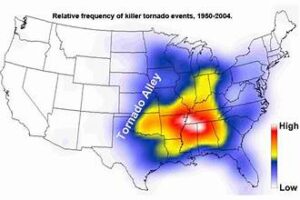
These clashes create an environment ripe for the development of severe thunderstorms, including those capable of producing hail.
PERFECT CONDITIONS FOR HAIL STORMS IN NASHVILLE!
1. Atmospheric Instability: Tennessee experiences frequent atmospheric instability, particularly during the spring and summer months. Warm, moist air near the surface interacts with cooler air aloft, leading to the formation of strong updrafts within thunderstorms. These updrafts can carry water droplets high into the atmosphere, where they freeze and form hailstones.
2. Topography: Tennessee’s diverse topography, including mountains, valleys, and plains, can enhance atmospheric instability and contribute to the development of severe thunderstorms. Mountains can act as barriers to airflow, forcing air masses to rise and creating favorable conditions for thunderstorm formation.
3. Weather Patterns: Weather patterns such as cold fronts, warm fronts, and low-pressure systems often move through Tennessee, bringing changes in temperature, humidity, and atmospheric pressure that can trigger thunderstorm development. These weather systems can provide the necessary ingredients for hail formation, including strong updrafts and abundant moisture.
BEWARE OF SPRING STORMS!
Tennessee’s location and weather make hail storms common in the state, especially in spring and summer. The state’s geography and atmospheric conditions contribute to the frequent occurrence of these storms.
Signs Of Hail Damage You Can Determine from the Ground!
While it’s challenging to fully assess hail damage on a roof from the ground, there are signs to watch for that suggest potential damage. Here’s how to check for hail damage and what to look out for:
- Check gutters, gutter screens, or downspouts for dents: Significant hail damage on a roof often leads to dented gutters. Even small impacts can indicate potential issues.
- Inspect siding and windowsills/casings: Look for dents or dings on the home’s siding and windowsills/casings. Damage here suggests possible damage to the roof as well.
- Examine other soft metal surfaces: Check metal fascia on roof eaves and any other exposed metal for signs of hail damage impact, even minor dings.
- Assess outdoor items like air conditioners: Damage to air conditioners or outdoor items can indicate further hail damage on the roof. This damage may also qualify for insurance replacement.
DOCUMENT ALL HAIL DAMAGE FOR INSURANCE!
Remember to document all damaged areas, including sheds, patio covers, and decks, for insurance purposes.
Look for damage to decks or painted wood surfaces: Chipped paint on decks or painted surfaces may be a result of hail impact. For more signs of hail damage, refer to our comprehensive checklist.
Accurate Roof Inspections Require You To Get On The Roof!
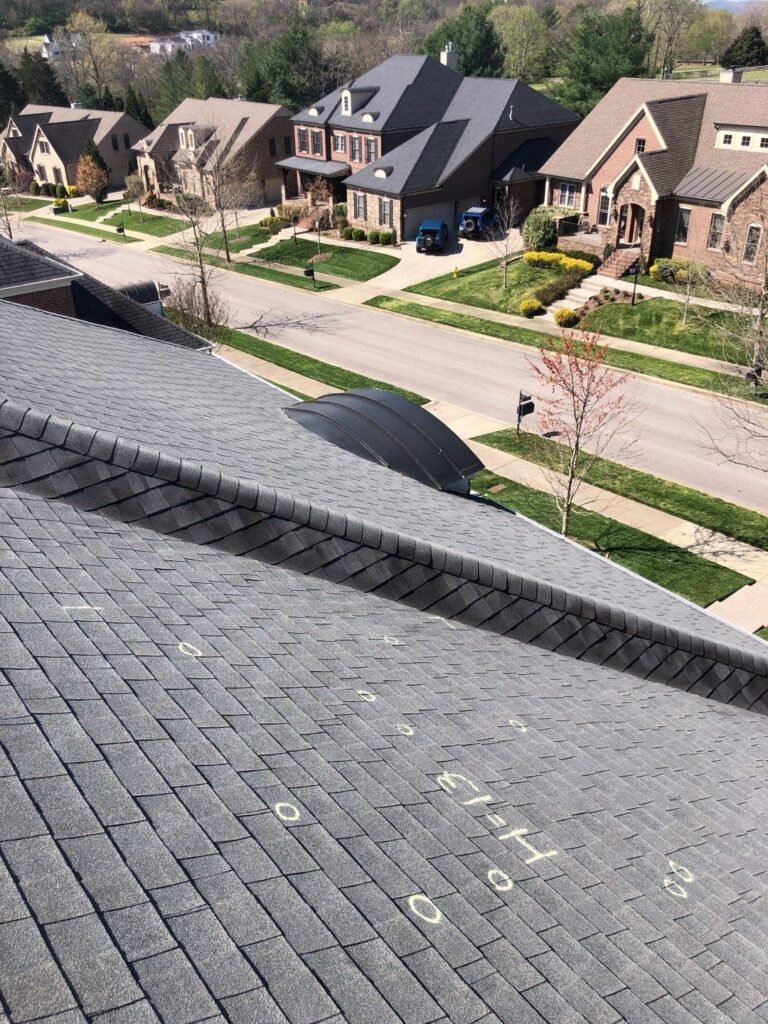
Inspect all roof vents and features for any signs of damage such as dents, dings, or chipped surfaces. For areas that are harder to see, like chimney covers, use chalk to reveal hail impact points. On softer metal vents, damage will be more apparent.
Lastly, pay close attention to the shingles. Hail damage to shingles is crucial for insurance claims, so ensure you thoroughly assess their condition.
Finding Hail Damage on Asphalt Shingle Roofs

Hail damage is sneeky and may not show the consequences of the damage for two years or more. If homeowners wait to file an insurance claim til leaks or visible damage show, it may be past the statute of limitations and an insurance claim will be denied.
Hail damages causes indentations (major or minor) in the shingles resulting in granule lost. Over time, this impacts the integrity of the roof and additional granules will be lost leading to roof leaks. Don’t be mislead into believing small hail doesn’t cause roof damage! Even small hail stones can result in roof leaks over time.
To determine if your roof has sustained enough hai damage to file an insurance claim, we perform a “test square” on your roof. If you are performing your own test square measure off a section 10’ by 10’ on your roof.
Then, look inside this square for hail hits and see how many hits you have. The bar varies between insurance carriers on how many hits are required – and this may also change based om the age of your roof. However, 8 hits within a test square is a good measure for determining if your roof damage justifies filing an insurance claim.
If you find 8 hits in your square, you should file a claim for a full roof replacement. Shingle damage caused by hail is rarely something that can be repaired like wind damage.
Can A Metal Roof Have Hail Damage?
Yes, hail can damage a metal roof. While metal roofs are generally more durable and resistant to damage compared to traditional roofing materials like asphalt shingles, they are not completely impervious to hail.
The severity of the damage depends on various factors including the size and density of the hailstones, the type and thickness of the metal roofing material, and the angle of impact.
Hail can cause dents, dings, and even punctures in metal roofing panels. In severe cases, large hailstones or repeated impacts over time can lead to significant damage that compromises the integrity of the roof, potentially resulting in leaks and the need for repairs or replacement.
Homeowners with metal roofs should inspect their roofs for hail damage after severe weather events and consider contacting a professional roofer for a thorough assessment if they suspect damage has occurred.
What Is Hail Splatter
Hail splatter is when hail hits a surface and makes water splashes or patterns. When hailstones fall with sufficient force, they can create a splattering effect upon hitting surfaces that are wet or have liquid present, such as puddles, mud, or even moist soil.
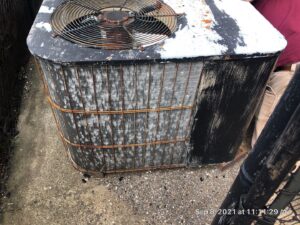
Hail splatter itself typically does not cause significant damage. However, it can be an indicator of hail impact, which can cause damage depending on the size and density of the hailstones. Hailstones falling from the sky can cause damage to property, vehicles, crops, and infrastructure, especially if they are large and/or accompanied by strong winds.
While hail splatter may not directly cause damage, it can still leave marks or stains on surfaces where it occurs. Additionally, if hail splatter is accompanied by hail impact, the combination of the two may result in more noticeable damage.
In summary, while hail splatter itself is not usually harmful, it can be a sign of hailstorm activity, which can potentially cause damage.
What size hail causes roof damage?
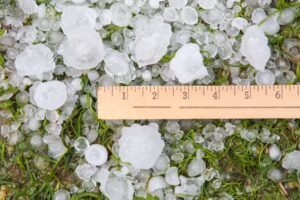
GENERAL GUIDELINE FOR HAIL SIZE AND HAIL DAMAGE
- Marble-sized hail (about 1/4 inch or 0.6 cm in diameter): This size of hail is generally considered small and is unlikely to cause significant damage to most roofs.
- Dime-sized hail (about 0.7 inches or 1.8 cm in diameter): Hailstones of this size can start to cause minor damage, particularly to vulnerable roofing materials like asphalt shingles.
- Quarter-sized hail (about 1 inch or 2.5 cm in diameter): Hail of this size can cause more substantial damage to roofs, especially if they are older or already weakened.
- Golf ball-sized hail (about 1.75 inches or 4.4 cm in diameter): Hailstones of this size are known to cause significant damage to roofs, including punctures and fractures in roofing materials.
- Baseball-sized hail (about 2.75 inches or 7 cm in diameter): Hail of this size can cause severe damage to roofs, including structural damage and penetration through the roof.
- Softball-sized hail (about 4 inches or 10 cm in diameter) or larger: Hailstones of this size can cause catastrophic damage to roofs, leading to widespread destruction.
It’s important to note that even smaller hailstones can cause damage under certain conditions, such as high winds or repeated impacts. Additionally, the type of roofing material can significantly affect its susceptibility to hail damage. Metal roofing, for example, tends to be more resistant to hail damage compared to asphalt shingles.
What does hail damage do to a roof?
Hail damage to a roof can manifest in various ways, depending on the severity of the hailstorm, the size of the hailstones, and the type of roofing material. Here are some common types of damage that hail can cause to a roof:
1. Dented or cracked shingles:
Asphalt shingles, which are commonly used in roofing, can be dented or cracked by the impact of hailstones. This can weaken the shingles and compromise their ability to protect the underlying structure from water damage.
2. Loosened granules:
Hail impact can dislodge the granules on the surface of asphalt shingles. These granules serve to protect the shingles from UV damage and water penetration. When granules are dislodged, it exposes the underlying asphalt layer, making the shingles more vulnerable to deterioration.
3. Exposed underlying layers:
Hail can sometimes cause enough damage to remove portions of the shingle layers, exposing the underlying substrate or felt layer. This exposes the roof to potential leaks and water damage.
4. Punctures or tears:
Hailstones can puncture or tear roofing materials such as asphalt shingles, wood shakes, or even metal roofing panels. These punctures create openings through which water can enter the roof structure, leading to leaks and potential water damage inside the building.
5. Damage to flashing and gutters:
Hail can also damage flashing, which is used to seal joints and prevent water intrusion around roof penetrations such as chimneys, vents, and skylights. Additionally, hailstones can dent or damage gutters and downspouts, affecting their ability to channel water away from the roof and foundation.
6. Structural damage:
In severe cases, hailstones can cause structural damage to the roof decking or support structure. This can compromise the integrity of the roof and pose safety hazards.
Overall, hail damage to a roof can result in leaks, reduced lifespan of the roofing system, compromised structural integrity, and the need for repairs or replacement to maintain the protection and functionality of the roof.
INTERESTING Hail Storm FACTS:
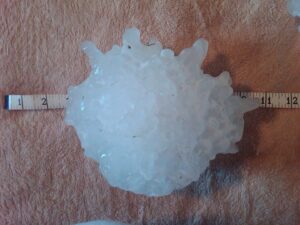
According to NOAA there were 7,179 recorded hail storm events in the United States in 2022.
In the United States alone, hailstorms are one of the most costly types of natural disasters in terms of property damage. According to the National Oceanic and Atmospheric Administration (NOAA), hail caused an average of over $10 billion in damages annually between 2000 and 2020.
What do I do If I think I have hail damage?
If you suspect hail damage to your roof, your first step should be to contact MidSouth Construction Roofing Contractors for a complimentary roof inspection.
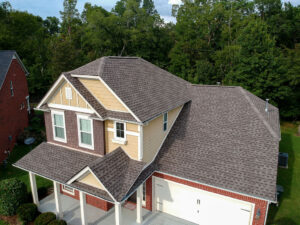
Many homeowners wonder, “Will insurance cover a new roof?” The answer depends on your policy and having the right team on your side. Our trained professionals can determine if the damage is functional or cosmetic, while a public adjuster can assist in negotiating a fair settlement with the insurance adjuster.
It’s crucial that you have MidSouth Construction Roofing Contractors present during the inspection with your insurance adjuster. Remember, insurance companies may seek reasons to avoid replacing your roof, which is why having our contractor by your side is essential for ensuring a fair assessment of the damage.
What Do I Do After A Hail Storm?
Roof inspections after a hail storm should always be performed by a qualified and reputable roofing contractor. Roofers who specialize in hail and are a local company are a must! Hail damage inspections are essential expertise for Nashville roofers like MidSouth Construction.

If our free roof inspection reflects no damage, or minor damage, we will advise you of that so you can have peace of mind! We’re MidSouth Construction – Nashville’s most trusted roofing contractor!



